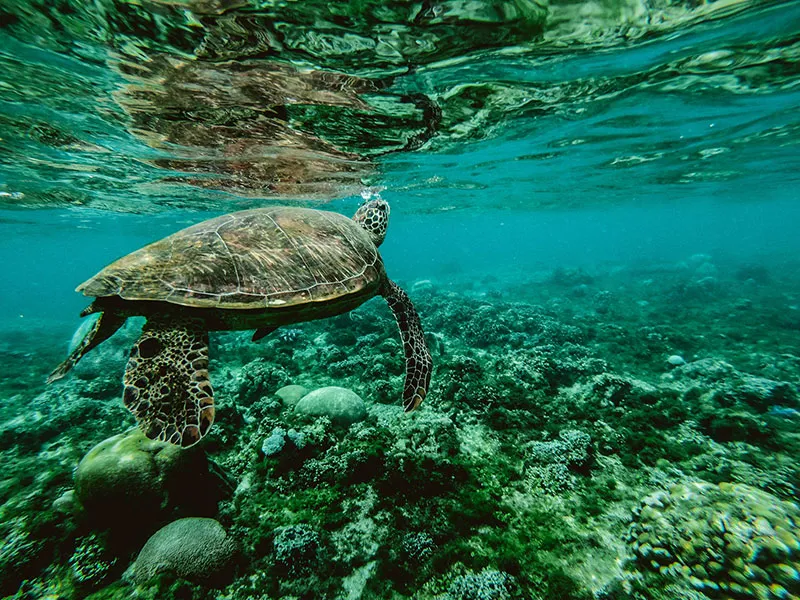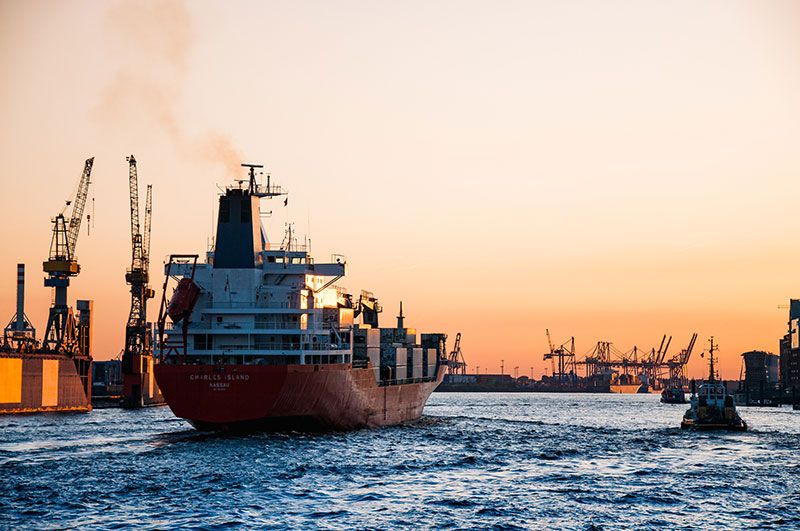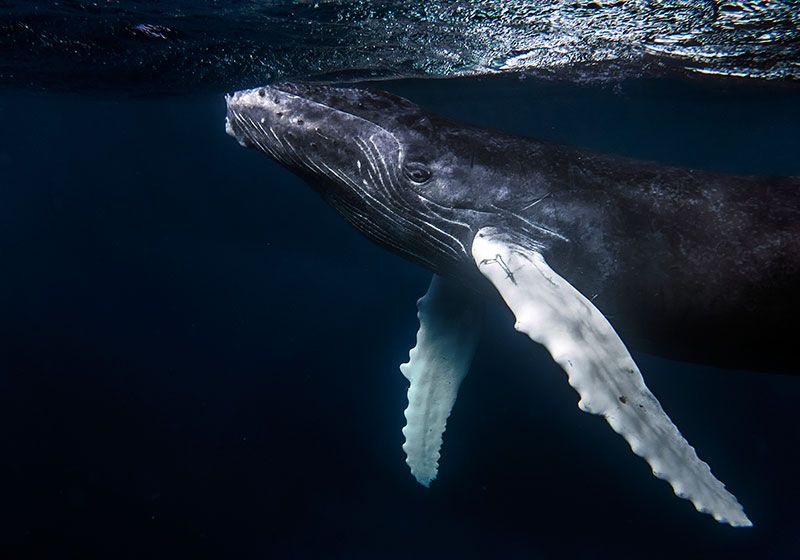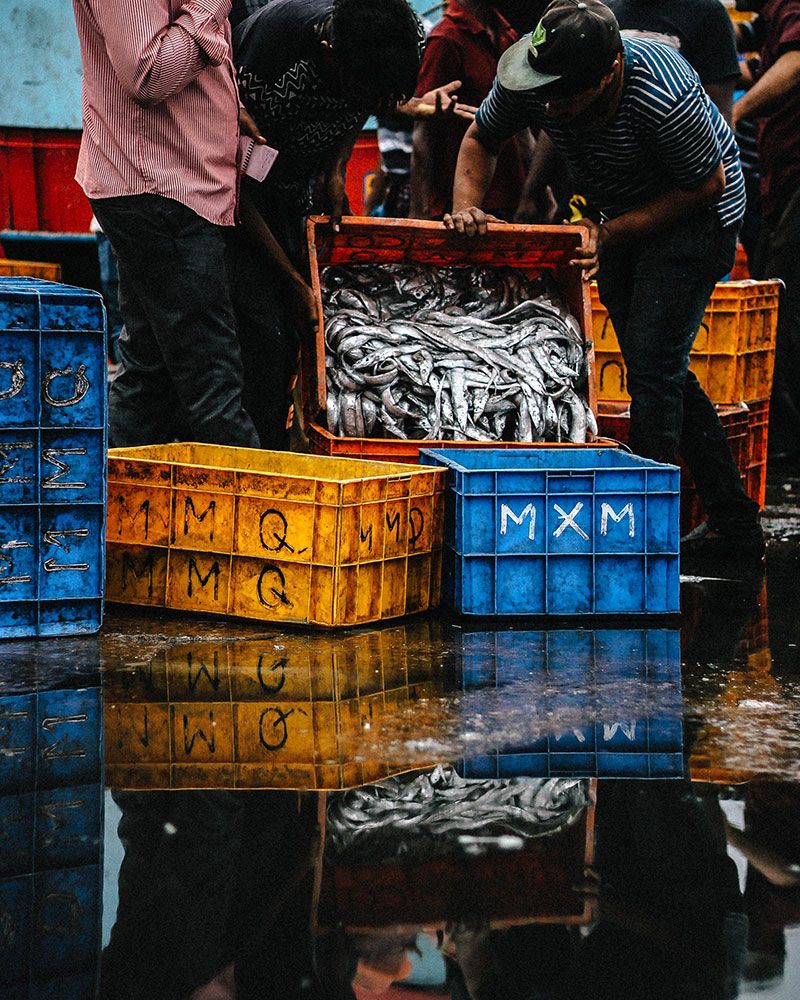Why the Ocean Needs Wilderness
A new study finds that only 13 percent of the ocean can be classified as “wilderness.” But what does this even mean?
/https://tf-cmsv2-smithsonianmag-media.s3.amazonaws.com/filer/58/24/58243445-e601-49ec-ae0d-72f052a21ac3/credit_talia_cohen.jpg)
Anyone who’s ventured beyond the sight of land or looked down from a jetliner could easily imagine most of the vast ocean as a wilderness, a place that human influence could barely reach, even if we tried. But that is definitely not the case. The impact of human activity on the ocean is pervasive, deep and on the rise. Industrial fishing has reduced fish stocks in coastal waters and in every corner of the high seas; shipping lanes wrap around the globe; agricultural runoff and industrial pollution are impacting coral reefs and creating dead zones; drilling rigs dot coastal shelves; and microplastics are everywhere. A new industry of seafloor mining will likely begin in the near future. And that’s not to mention the impacts of climate change, which are rearranging marine habitats and acidifying the oceans.
But it turns out, there are still some spots left in the ocean that have seen minimal human interference, areas that might be dubbed “wilderness.” Though those areas are disappearing rapidly, they are more important than ever; studies show that areas with minimal human impact are the biological engines of the ocean, preserving biological diversity, acting as breeding grounds for fish stocks and bastions of resilience in our rapidly transforming oceans. Deciding what, exactly, constitutes a wilderness in the ocean, however, is not completely figured out, though some researchers are trying to find an answer.
Wilderness, in the broadest definition of the term, simply means an area uninhabited by humans that is more or less in its natural state. Over the last century, at least in the United States, it’s taken on a legal definition. The 1964 Wilderness Act created a legal designation that keeps some remarkable public lands as untouched as possible. Unlike National Parks, with their visitor centers and traffic-clogged roads, or National Forests, which can sell off tracts of timber and are crisscrossed by logging roads, wilderness areas (most of which are in remote sections of National Parks and Forests) have no roads or concession stands, just footpaths. Most can only be visited on foot, horseback or canoe with off-road vehicles and even bicycles banned. The logic behind the Wilderness Act, though it is still debated, continues to make sense 50 years after its passage—the world needs areas and ecosystems that function without the influence of humans, not only to protect plants and animals, but to give humans the possibility of experiencing a world without Facebook.

It’s relatively easy to look on a map and decide which large tracts of undeveloped forest or desert should be wilderness. But it’s much harder to stare at the ocean and make the same decision. That’s why Kendall Jones of the University of Queensland and colleagues from the Wilderness Conservation Society decided to take a stab at coming up with criteria to identify ocean wilderness. The team looked at global data from 19 human-induced stressors on the ocean to develop a map of wilderness, or areas least affected by us. The threats include different types of fishing, commercial shipping, invasive species and nutrient, light and industrial pollution. When they are all rolled together the team found that just 13 percent of the world’s oceans fit their definition of wilderness. The vast majority of those wild areas are found near the poles and in a portion of the South Pacific. The North Atlantic has no wilderness left at all. If the impacts of climate change, including temperature increases, acidification and other effects, are rolled into the equation, Jones explains, there is simply no wilderness left anywhere. The research appears in the journal Current Biology.

“A lot of people view the ocean as this wild, untouched place,” Jones explains. “At one time people never thought we’d cross the ocean. Then we did. Then we thought we could never exhaust our fish stocks. This research dispels the myth of a place so vast and so expansive that humans can never impact it. What our study is showing is that we can impact quite a lot of it.”
Bradley Barr, affiliate professor at University of New Hampshire’s School of Marine Sciences and Ocean Engineering, says he welcomes the paper for advocating the idea of ocean wilderness, though he does not believe the areas the team has identified are truly wilderness areas. “I question whether what they are identifying is ‘wilderness’…remote, intact ecosystems are deserving of protection for many of the reasons the authors suggest in the paper, but ‘wilderness’ is perhaps something else,” he writes in an email.

Barr does not dispute that the areas identified in the study are truly remote and relatively free of human influence. But that is not enough to deem them a wilderness he argues. Instead, he advocates something closer to the definition in the Wilderness Act, in which wilderness areas are given statutory protection and are managed to preserve their wild characteristics and other goals decided by society at large. In other words, there are lots of wild places out there, but they are not “wilderness” until humans intentionally decide they are worthy of protection. Until then they are just spots that have not yet been spoiled.
Currently, almost no spot in the oceans meets those more stringent criteria, something Barr acknowledges. “Under this definition, there are relatively few areas that could be legitimately called ‘wilderness’…and only a handful of such sites around the world that are located in coastal and ocean waters.”

Barr isn’t just interested in placing a new layer of bureaucracy on remote bits of ocean; he thinks having a legal designation is foundational for a wilderness. By not clearly defining an area as wilderness puts it at risk. “I have long believed that to acknowledge these remote, intact places in the ocean as ‘wilderness’ is a powerful disincentive to doing the difficult work of identifying, characterizing, establishing and preserving wilderness consistent with the laws we, as a society, have created through our elected representatives, and have struggled mightily to sustain in the face of often fierce opposition,” he writes. “If we can simply call a place ‘wilderness,’ why would we bother to engage in the considerably more challenging statutory process?”
Enric Sala, a marine ecologist and National Geographic Explorer-in-Residence, also believes it’s important to have a discussion about ocean wilderness, but thinks Jones’ map may have missed data from Global Fishing Watch showing that Chinese and Taiwanese trawlers are exploiting fishing grounds in the South Pacific that the study map lists as wilderness. He also thinks the criteria miss the mark. Many areas he’s visited that he would consider wilderness did not make the grade. “I’ve been to many places on 25 expeditions to the wildest places in the ocean,” he says. “They are still wild, and they are not on this map.”

Instead of wringing our hands deciding what is truly still wild and what is not, Sala suggests it’s more important to create marine reserves around the world covering all sorts of habitats, both those that are still wild and those that have a chance to recover from human impact, instead of focusing on the most remote, least-impacted areas.
In fact, his research shows that creating and policing marine areas, especially no-take areas that prohibit fishing, can lead to massive spikes in biodiversity, with no-take reserves having 670 times the biomass of adjacent unprotected areas. He points to the case of the no-take marine reserve around the Galapagos, established in 1998. Not only have fish numbers there skyrocketed in the last 20 years, they’ve dramatically improved fishing in areas outside the reserve. He thinks we should have similar areas all over the globe, even if they are not perfectly “wild.”

“It’s like somebody says they are going to burn the Metropolitan Museum and you can save a sample of the art,” he says. “You wouldn’t just save the Impressionists or the Egyptian sculptures. You want to save enough art from every period to know about the evolution of art throughout history. You need to protect habitat in the world’s major ecosystems, near the coasts and in open water, in the shallows where there have been heavy impacts and in the deep ocean, before it’s too late.”
Jones agrees that the places deemed marine wilderness, by any definition, need some legal protection to stay that way. While the U.N. has set a goal for the world to put 10 percent of the oceans under protection by 2020, that really only applies to territorial waters, and we’ve only protected a pathetic 3.6 percent of that by the most recent estimate. Sixty-six percent of the areas Jones’s study identifies as wilderness are on the high seas. “No one has the power to designate a wilderness area in international waters,” he says. “We need to take a step toward changing how we manage the high seas.”
Barr agrees that setting up an international framework to protect these remote spots as wilderness is necessary, but writes that we are still far from that discussion even beginning. Even so, it needs to happen, and soon.
“To just call a place ‘wilderness’ and not do everything possible to sustain the wilderness values and qualities of that place, with all the passion and hard work that this requires,” he writes, “in my opinion diminishes not only that place, but all wilderness.”